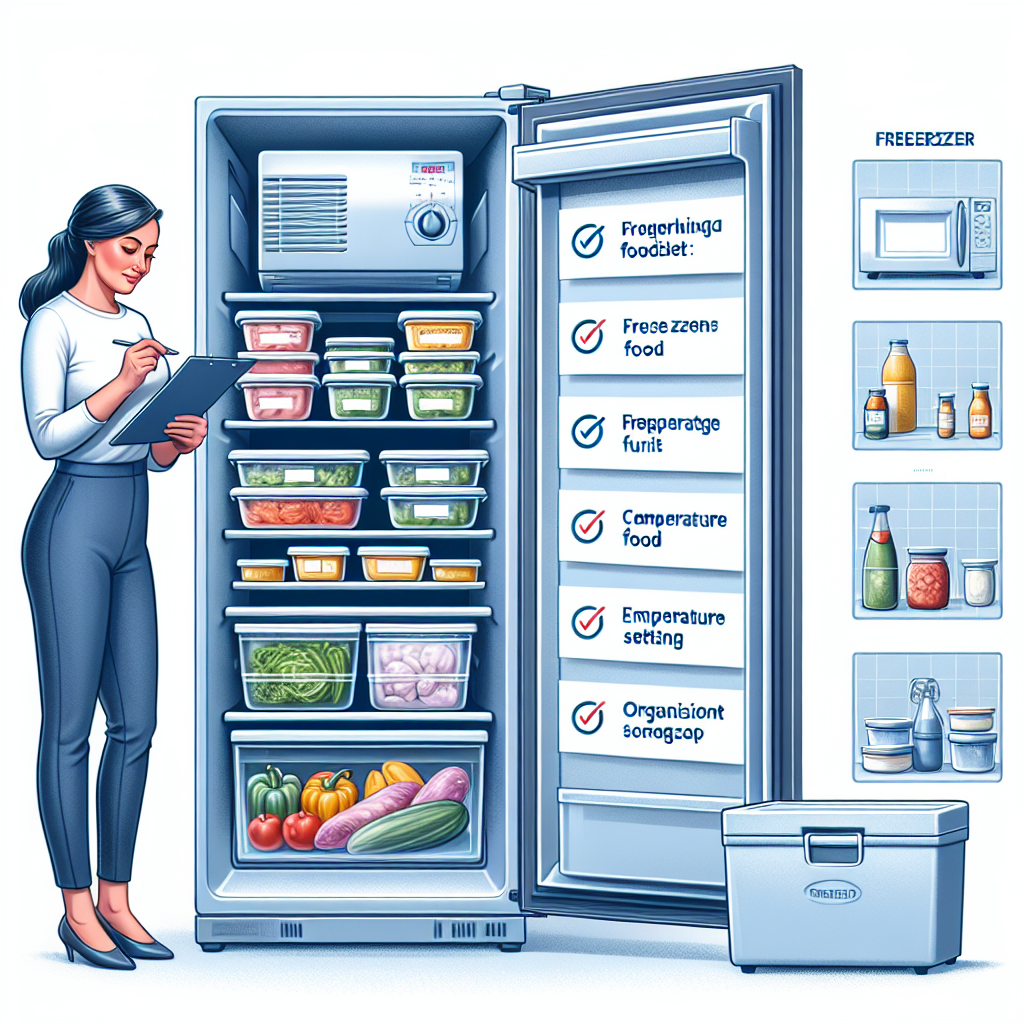Best Practices for Frozen Food and Cold Storage
-
Table of Contents
- Optimizing Frozen Food and Cold Storage: Best Practices for Efficiency and Safety
- Understanding the Importance of Cold Chain Management
- Best Practices for Frozen Food Storage
- Optimizing Cold Storage Facilities
- Technological Advancements in Cold Storage
- Regulatory Compliance and Safety Standards
- Environmental Considerations
- Conclusion: Ensuring Quality and Safety in Frozen Food Storage
- ETprotein: Enhancing Your Frozen Food Products with High-Quality Proteins
Optimizing Frozen Food and Cold Storage: Best Practices for Efficiency and Safety

The frozen food industry has seen significant growth over the years, with the global market expected to reach USD 366.3 billion by 2025, according to Grand View Research. As the demand for frozen products increases, so does the need for efficient and safe cold storage solutions. This article will delve into the best practices for frozen food and cold storage, ensuring that products maintain their quality from production to consumption.
Understanding the Importance of Cold Chain Management
The cold chain is a temperature-controlled supply chain that includes all the stages from production, storage, and distribution to the end consumer. Proper management of the cold chain is crucial for maintaining the safety and quality of frozen foods. Any break in the chain can lead to compromised food safety, reduced shelf life, and financial losses.
Best Practices for Frozen Food Storage
Adhering to the following best practices can help ensure the integrity of frozen foods throughout the storage process:
- Temperature Control: Maintain a consistent temperature at or below 0°F (-18°C) to prevent the growth of bacteria and ensure food safety.
- Regular Monitoring: Use temperature monitoring devices and perform regular checks to ensure that the storage environment remains within the required range.
- Efficient Inventory Management: Implement a First-Expired-First-Out (FEFO) system to minimize the risk of spoilage and ensure that older products are used before newer ones.
- Adequate Airflow: Ensure proper airflow within the storage unit to maintain uniform temperature distribution and prevent cold spots.
- Proper Packaging: Use appropriate packaging materials that can withstand low temperatures and protect the food from freezer burn and dehydration.
Optimizing Cold Storage Facilities
Optimizing cold storage facilities is essential for operational efficiency and energy conservation. Consider the following strategies:
- Insulation: Invest in high-quality insulation to minimize heat transfer and reduce energy consumption.
- Energy-Efficient Equipment: Use energy-efficient refrigeration systems and LED lighting to lower energy costs and reduce environmental impact.
- Space Utilization: Maximize storage space by using adjustable racking systems and organizing products to facilitate easy access and airflow.
- Maintenance: Regularly service and maintain refrigeration equipment to prevent breakdowns and ensure optimal performance.
- Employee Training: Train staff on proper handling and storage procedures to maintain food safety and reduce waste.
Technological Advancements in Cold Storage
Technology plays a pivotal role in enhancing cold storage operations. Some of the latest advancements include:
- Automated Storage and Retrieval Systems (ASRS): These systems improve efficiency and accuracy in inventory management.
- Internet of Things (IoT): IoT devices enable real-time monitoring and control of storage conditions, leading to proactive management of the cold chain.
- Advanced Analytics: Data analytics can predict maintenance needs and optimize inventory levels, reducing waste and downtime.
Regulatory Compliance and Safety Standards
Compliance with regulatory standards is non-negotiable in the frozen food industry. Key regulations include:
- Food Safety Modernization Act (FSMA): This act focuses on preventing contamination and ensuring the safety of the food supply in the United States.
- Hazard Analysis and Critical Control Points (HACCP): HACCP is a systematic approach to identifying and controlling hazards that may pose a risk to food safety.
- Global Food Safety Initiative (GFSI): GFSI benchmarks food safety standards to ensure consistent quality and safety across the industry.
Adhering to these standards helps prevent foodborne illnesses and ensures consumer trust in frozen food products.
Environmental Considerations
Environmental sustainability is becoming increasingly important in the cold storage industry. Implementing green practices such as using natural refrigerants, optimizing insulation, and reducing greenhouse gas emissions can contribute to a more sustainable operation.
Conclusion: Ensuring Quality and Safety in Frozen Food Storage
In conclusion, maintaining the quality and safety of frozen foods requires a comprehensive approach to cold storage management. By implementing best practices for temperature control, inventory management, facility optimization, and regulatory compliance, businesses can ensure the integrity of their products. Additionally, embracing technological advancements and environmental sustainability can lead to improved efficiency and a reduced carbon footprint.
ETprotein: Enhancing Your Frozen Food Products with High-Quality Proteins
For businesses looking to enhance their frozen food offerings, ETprotein provides a range of high-quality protein products. Their organic bulk vegan proteins and L-(+)-Ergothioneine are ideal for adding nutritional value to frozen meals, ensuring that consumers receive both convenience and health benefits. With a commitment to non-GMO, allergen-free ingredients, and high purity levels, ETprotein’s products are a reliable choice for elevating your frozen food products.
About ETprotein:
ETprotein, a reputable protein and L-(+)-Ergothioneine (EGT) Chinese factory manufacturer and supplier, is renowned for producing, stocking, exporting, and delivering the highest quality organic bulk vegan proteins and L-(+)-Ergothioneine. They include Organic rice protein, clear rice protein, pea protein, clear pea protein, watermelon seed protein, pumpkin seed protein, sunflower seed protein, mung bean protein, peanut protein, and L-(+)-Ergothioneine EGT Pharmaceutical grade, L-(+)-Ergothioneine EGT food grade, L-(+)-Ergothioneine EGT cosmetic grade, L-(+)-Ergothioneine EGT reference grade and L-(+)-Ergothioneine EGT standard. Their offerings, characterized by a neutral taste, non-GMO, allergen-free attributes, with L-(+)-Ergothioneine purity over 98%, 99%, cater to a diverse range of industries. They serve nutraceutical, pharmaceutical, cosmeceutical, veterinary, as well as food and beverage finished product distributors, traders, and manufacturers across Europe, USA, Canada, Australia, Thailand, Japan, Korea, Brazil, and Chile, among others.
ETprotein specialization includes exporting and delivering tailor-made protein powder and finished nutritional supplements. Their extensive product range covers sectors like Food and Beverage, Sports Nutrition, Weight Management, Dietary Supplements, Health and Wellness Products, and Infant Formula, ensuring comprehensive solutions to meet all your protein needs.
As a trusted company by leading global food and beverage brands and Fortune 500 companies, ETprotein reinforces China’s reputation in the global arena. For more information or to sample their products, please contact them and email sales(at)ETprotein.com today.












